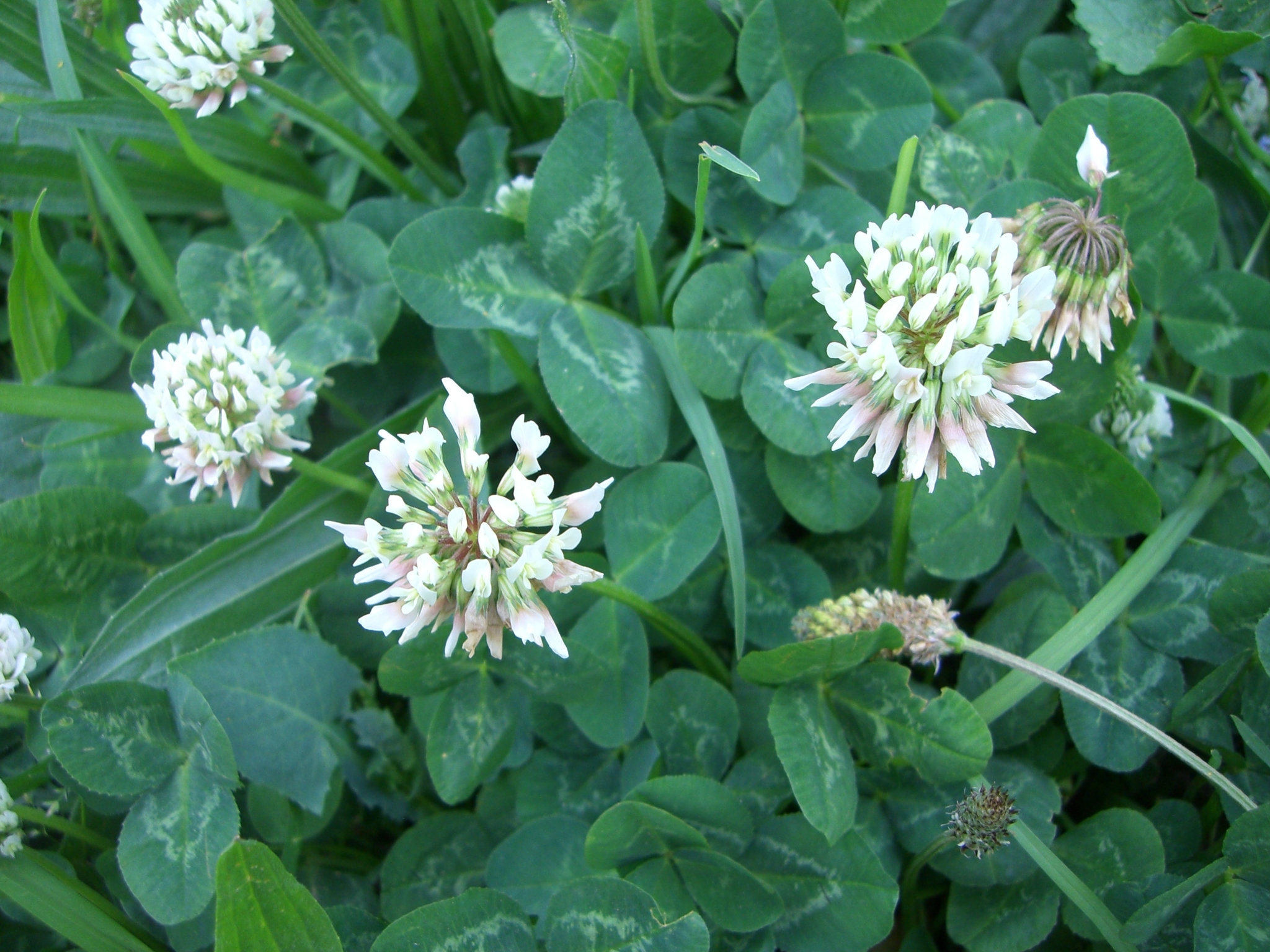
Latin tres — three, folius — leaf, referring to the 3-leaflet leaves of many species.
Annual, biennial or perennial herbs, rarely woody. Leaves with 3(5-8) generally toothed, palmately arranged leaflets; stipules large, more or less united to the leaf stalk. Flowers in heads or short spikes, occasionally solitary; fragrant. Flowers with petals attached to each other and to the stamen tube. Stamens 10, 9 united, 1 free. Fruit pod more or less enclosed within the persistent calyx; seeds mostly 1-4 (rarely to 10).
T. dubium Sibth., Suckling Clover, from Europe and WAsia is a common yellow-flowered lawn weed that is widely naturalised. T. pratense L., Red Clover, from Europe, the Middle East and N Africa, has pink to purple flowers and is widely naturalised and occasionally cultivated. T. repens L., White Clover, is a common perennial with creeping stems and white flowers and is used in lawn mixes for its nitrogenfixing properties. T. resupinatum L., Shaftal Clover, from the Middle East is a cultivated plant found as a roadside weed in Vic. The cultivar 'Kyambro' is available. T. subterraneum L., Subterranean Clover, from Europe, the Middle East and N Africa has a flower head of 3-6 fertile flowers and many infertile flowers without petals. It is grown for pasture improvement and is naturalised across Australia. The cultivars 'Gosse', 'Goulburn', 'Grasslands Colenso', 'Leura', 'Nuba', and 'Rosedale' are available.
About 300 species, mostly northern temperate and subtropical, excluding Australasia.
Seed; perennials by division.
Mostly spreading perennial herbs rooting at the nodes (often lawn plants); leaflets 3, palmately arranged.
Used as fodder, green manure, or for nitrogen fixation in lawns.
Source: (2002). Fabaceae. In: . Horticultural Flora of South-eastern Australia. Volume 3. Flowering plants. Dicotyledons. Part 2. The identification of garden and cultivated plants. University of New South Wales Press.
